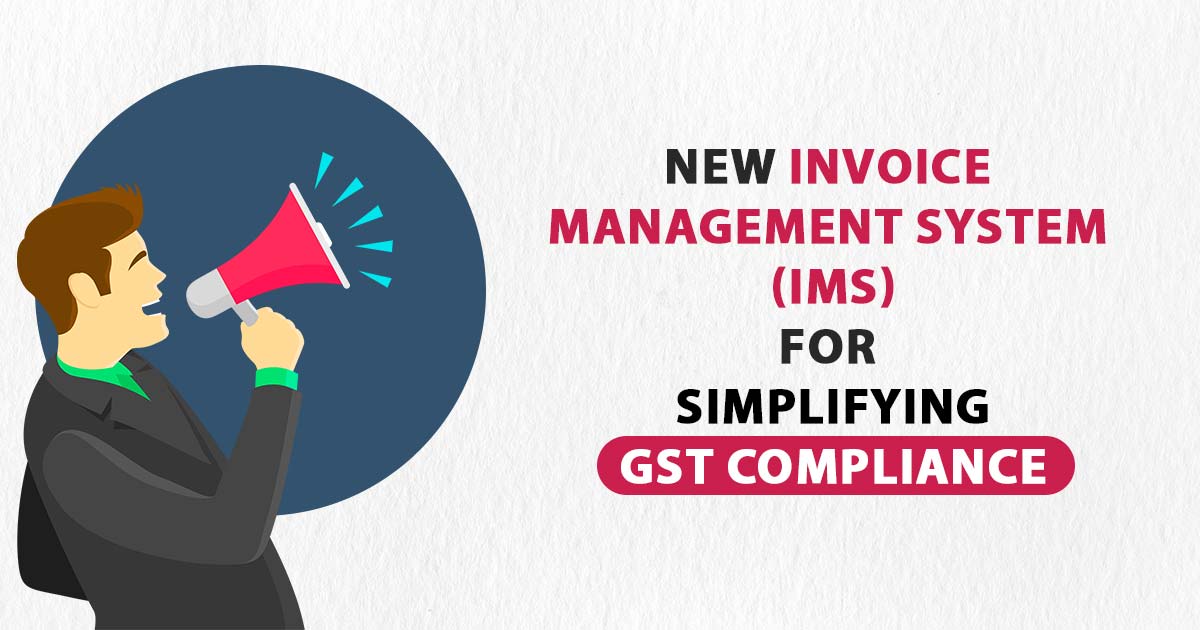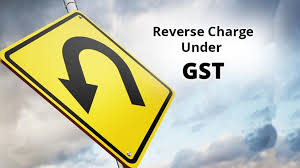दिवाळीच्या हार्दिक शुभेच्छा: सणाची महती आणि परंपरा
दिवाळी: सणाची ओळख
दिवाळी, ज्याला दीपावली म्हणूनही ओळखले जाते, हा भारतातील एक प्रमुख सण आहे, जो मुख्यतः प्रकाशाचा सण म्हणून साजरा केला जातो. या सणाची महती भारतीय संस्कृतीमध्ये अमूल्य आहे आणि हे पौराणिक कथांच्या माध्यमातून आजही जिवंत राहते. दिवाळीचा आधार मुख्यतः रामायणातील एक कथा आहे, ज्यात भगवान राम, सीता आणि लक्ष्मणांचा अयोध्येत परत येण्याचा सण साजरा केला जातो. याच वेळी, रावणाचा वध करून भगवान रामचा विजय प्रकाशाच्या प्रतिनिधित्वाचा प्रतीक बनतो.
दिवाळी उत्सवास अनेक गोष्टींचा समावेश आहे, जसे की लक्ष्मिपूजन, जे लक्ष्मी देवीच्या पूजेसाठी समर्पित आहे. देवी लक्ष्मी धन, समृद्धी आणि कल्याणाची अधिष्ठात्री देवता आहेत. त्यामुळे धनत्रयदशीमध्ये, ज्यादिवशी देवी लक्ष्मीसोबत धनवान गोष्टींचा पूजन केला जातो, हिंदू लोक महत्त्व दिला जातो. यानंतर नरक चतुर्थी पुजली जाते, ज्या दिवशी नरकातून सुटल्याबद्दल कृतज्ञता व्यक्त केली जाते.
दिवाळीमध्ये साजरे केले जाणारे इतर महत्वाचे उत्सव आहेत, जसे बालप्रतीपदा आणि भाऊबीज, ज्याद्वारे बहीण-भाईंचे प्रेम अधिक मजबूत केले जाते. बळी पाडवा हा सण सर्वासमोर एक समानता आणतो, ज्यामध्ये नवीन पिकांच्या आधारे विशेष खाद्यपदार्थ तयार केले जातात, हे सर्व दिवाळच्या सणाच्या मिठासात समृद्ध करते.
या सणाला एकत्रित रूपाने साजरे केले जाणारे अनेक सहली, प्रथा आणि सांस्कृतिक परंपरा आहेत, ज्यामुळे दिवाळीचा सण भारतीय समाजाच्या जीवनात महत्त्वपूर्ण स्थान गाठतो. या पार्श्वभूमीत, दिवाळी फक्त एक उत्सव नसून, सांस्कृतिक एकात्मतेचे आणि मानवतेच्या गोड गोष्टींचे प्रतीक आहे.
बसुबारास: सणाची सुरुवात
बसुबारास हा दिवाळी सणाच्या आगमनाची पहिली पायरी मानला जातो. हा दिन विशेषतः धनत्रयदशी च्या आधीच्या दिवशी साजरा केला जातो. या दिवशी विविध पारंपरिक रुजवाते आयोजित करून आत्मिक शुद्धता साधण्यास मदत होते. घराची स्वच्छता, नवीन वस्तूंची खरेदी, आणि गोळा करण्याची प्रक्रिया यामुळे हा दिवस महत्वाचा ठरतो.
या दिवशी लोक घरातील सर्व वस्त्र, सामान आणि उपकरणांची स्वच्छता करून त्यांच्या स्वच्छतेच्या विचाराने एक आगळा प्रकाश देतात. बसुबारासच्या दिवशी प्राचीन रीती-रिवाजानुसार लक्ष्मी माता यांचा मान केला जातो, ज्यामुळे धन व समृद्धीची प्राप्ती होते. ह्या प्रथेमध्ये घराच्या कोपर्यात किंवा अंगणात सौंदर्य वर्धनासाठी रंगाने सजवले जाते, जे सणाच्या आनंदात आवड निर्माण करते.
इतिहासात बसुबारासकडे भगवान श्रीरामाने सीतेला जाणून असलेल्या वस्त्रांचे महत्त्व सांगितले आहे. त्यानंतरच्या काळात या सणाचे महत्त्व आणखी वाढले. लोक आदिवासी परंपरा, संस्कृती व धार्मिक श्रद्धा याबद्दल जागरूक असून या दिवशी गोळा करण्यास उत्सुक असतात. बसुबारास सणानंतर धनत्रयदशी, नरक चतुर्थी, लक्ष्मिपुजन, आणि बालप्रतीपदा यांसारखे सण येतात. त्यामुळे आपल्या जीवनात लक्ष्मी आणि आनंद आणण्यासाठी या चिंतनशक्तीच्या सणांचे स्थान खूप महत्त्वाचे आहे.
धन घेऊन येणार्या धनत्रयदशीच्या साजरे होण्यापूर्वी केलेले हे सर्व कृतींमुळे दिवाळीचा उत्सव आनंददायीडे निर्माण करते. त्यामुळे आपण पाया ठेवून सणाची सुरुवात करतो आणि उत्सवाची पद्धत समृद्ध करतो.
धनत्रयदशी: धनाचे पूजन
धनत्रयदशी, दिवाळीच्या पाच दिवसीय उत्सवांतील एक महत्त्वाचा दिवस, विशेषतः धनाचे पूजन करण्यासाठी ओळखला जातो. ह्या दिवशी, भगवान धन्वंतर, ज्यांना आरोग्याचा आणि धनाचा देव मानले जाते, यांची पूजा केली जाते. भारतीय परंपरेप्रमाणे, धनत्रयदशी हा दिवस संपत्ती आणि समृद्धीच्या प्रतीक समजला जातो. या दिवशी अनेक लोक स्वर्ण, चांदी किंवा इतर मौल्यवान वस्त्रांची खरेदी करतात, ज्यामुळे दीर्घकालिक कल्याण आणि आर्थिक समृद्धी साधता येते.
या दिवशी विशेषतः लक्ष्मिपूजनाचे महत्त्व अधिक वाढते, कारण लक्ष्मी देवी याही समृद्धी आणि समृद्धीसाठी पूजनीय मानल्या जातात. धनत्रयदशीच्या पूजनात महत्त्वाचे असे काही पदार्थ तयार केले जातात, जसे की लाडू, बासुंदी, आणि चकली, जे परिवारातील सर्व सदस्यांसाठी एकत्रितपणे बनवले जातात. हा सण मातृभूमीशी एक प्रकारचा साक्षात्कार असतो, कारण तो आपल्या सांस्कृतिक आणि धार्मिक मूल्यांचे प्रतिक म्हणून उभा असतो.
धनत्रयदशीच्या दिवशी, घरातील प्रत्येक सदस्य धनवंतर जयंती निमित्त एकत्र येऊन पूजा करतो, ज्यातून परस्पर प्रेम आणि एकतेचा संदेश जातो. या सणाच्या विशेष पद्धतीत ‘धनतेरस’ या नावानेही ओळखले जाते, जे सूचक आहे की या दिवशी घेतलेले सर्व निर्णय सदैव सफल होतात. त्यामुळे, या दिवशी विशेष काळजी घेऊन पूजनाची विधी पार पडली जाते, जेणेकरून त्या अनुसार राहणाऱ्यांच्या जीवनात धन, ऐश्वर्य, आणि सुख येईल.
नरक चतुर्थी: पापांचे काढा
नरक चतुर्थी, ज्याला नारक चतुर्थी म्हणूनही ओळखले जाते, हा दिवाळीच्या पूर्वीचा एक महत्त्वाचा उत्सव आहे. हा सण मुख्यतः भगवान यमराज यांच्या उपासनेला समर्पित आहे, ज्या जीवांना नरकात जाण्याचा प्रसंग येतो. या दिवशी, भक्तजन उपवास ठेवतात आणि विविध धार्मिक कर्मकांडामध्ये भाग घेतात, ज्यायोगे त्यांनी त्यांच्या पापांचा प्रायश्चित्त करावा लागतो. यमराजाच्या उपासनेच्या माध्यमातून, भक्त भगवान यमाच्या कृपेने नरकाच्या दुःखांपासून मुक्तता प्राप्त करायला इच्छितात.
नरक चतुर्थीचा मुख्य उद्देश म्हणजे पापांचे काढा आणि आत्म्याची शुद्धता साधणे. अनेक जण या दिवशी विशेष उपवास करतात, त्यामुळे त्यांचा मानसिक आणि आध्यात्मिक विकास साधता येतो. या दिवशी दरवर्षी पवित्र प्रथानुसार, भक्तजन रात्रीत यमराजाचे स्मरण करून त्यांना इष्ट धातू अर्पण करतात. या प्रथेमुळे, भक्त त्यांच्यासाठी सुसंस्कारित जीवनाची प्रार्थना करतात आणि त्यांच्या पूर्वजांचे स्मरण करतात.
या दिवशी, लोक आपल्या घरांच्या आंगणात दीप लावून विषेश लक्ष केंद्रित करतात, ज्यामुळे घरात आणि आस-पासच्या वातावरणात सकारात्मक ऊर्जा निर्माण होते. धनत्रयदशीच्या दुसऱ्या दिवशी, नरक चतुर्थी साजरी केली जाते, त्यामुळे या दोन सणांमध्ये महत्त्वाची संबंध आहे. या दिवशी केलेल्या पूजा आणि उपवासाच्या माध्यमातून भक्तजन लक्ष्मिपुजनाच्या नंतरच्या उत्सवाच्या तयारीसाठी एक सशक्त आधार मिळवतात. या पवित्र दिवशी, पापांचे काढा आणि आत्म्याची शुद्धता साधणे हे धार्मिक दृष्टिकोनातून अत्यंत महत्त्वाचे आहे, तसेच हा सण दिवाळीच्या अन्य अनुष्ठानांसाठी सुचना देतो.
लक्ष्मिपुजन: समृद्धीचा आशीर्वाद
दिवाळीच्या सणाच्या विशेष महत्त्वाच्या दिवसांपैकी एक म्हणजे लक्ष्मिपुजन, जो धनत्रयदशीच्या दिवशी साजरा केला जातो. या दिवशी Goddess लक्ष्मीची पूजा केली जाते, तिच्या कृपेमुळे जीवनात समृद्धी व वैभव येऊ शकते. या दिवशी संपूर्ण घर स्वच्छ करून, लक्ष्मी मातेच्या प्रतिमेची सजावट केली जाते. विशेषतः लक्ष्मीच्या पूजेची तयारी करताना योग्य पद्धतीचे पालन करणे आवश्यक आहे, ज्यामुळे भक्ताला उचित आशीर्वाद प्राप्त होतो.
लक्ष्मिपुजनाच्या तयारीसाठी, श्रद्धा आणि समर्पण आवश्यक आहे. पहिल्याने, घरात स्वच्छता ठेवणे महत्त्वाचे आहे. गायीच्या गोबराने आचमन करून, आणि घराच्या मुख्य द्वारावर रंगोली काढली जाते. त्यानंतर, लक्ष्मी मातेचा फोटो किंवा मूळ स्थापित करून, तीला फुलांची माला, धन, नैवेद्य व फळे अर्पित केली जातात. हा धार्मिक अनुष्ठान नवस स्वीकारण्यासाठी किंवा वितरीत केलेल्या आशीर्वादांची प्राप्ती करण्यासाठी केला जातो.
याशिवाय, या दिवशी स्वादिष्ट खाद्यपदार्थ बनवले जातात. विशेषतः गूळ, लाडू, चकली, कडी, व नृत्य धरून विविध मिठाई बनवली जाते. या सणाची विशेषता अशी आहे की, या दिवशी रात्री देवी लक्ष्मीसहित परिवाराच्या अन्य सदस्यांसमवेत भोजन घेतल्याने प्रेम व एकता वृद्धिंगत होते. लक्ष्मिपुजन, बसुबारास आणि दीपावली पाडवा यांच्या दृष्टीने पुढील महत्त्वाचा परंपरा आहे, ज्यामध्ये धन व सुखाची देवता लक्ष्मी मातेच्या आशीर्वादासाठीची प्रार्थना केली जाते.
यामुळे, लक्ष्मिपुजन केवळ एक धार्मिक क्रिया नसून, समाजामध्ये एकत्र येण्यासाठी, एकतेला प्रोत्साहीत करण्याची एक साधना आहे. याबरोबरच, या विशेष दिवशीच्या दिवाण्या त्यांच्या प्रिय जनांसाठी आणि मित्रांसाठी ही समृद्धीच्या आशा व्यक्त करतात.
बळी पाडवा: सणातील अद्भुत परंपरा
बळी पाडवा हा दिवाळीचा एक महत्त्वाचा आणि अद्वितीय दिवस आहे, जो भारताच्या विविध भागात विशेष उत्साहाने साजरा केला जातो. या दिवसाला नरक चतुर्थी देखील म्हटले जाते, कारण याची पृष्ठभूमी बळीच्या कथा या सणात गुंतलेली आहे. बळी पाडवा आपल्या कथेच्या अनुषंगाने अन्य खास सणांमध्ये स्थान मिळवला आहे, ज्यात लक्ष्मिपुजन देखील समाविष्ट आहे. या दिवशी, बळी या राक्षस राजाच्या विजयाची आणि त्याच्या धरमशक्तिच्या शक्तीला मानणारा दिवस आहे.
या दिवशी घराघरात विशेष पूजा आणि उपासना केली जाते. लोकांनी त्यांच्या कर्तृत्वाद्वारे बळी पाडवाच्या दिवशी त्यांच्या अंत:करणात शुभेच्छा प्रकट करण्यासाठी विशेष सजावट केली असते. या दिवशी टिकावलेले अन्न, विशेषतः गोड पदार्थ, यांची मात्र खास महत्त्व आहे. बहुतेक वेळा, घरात दिवाबत्ती लावल्या जातात आणि त्यांना विशेष महत्व दिले जाते. तसेच, बळी पाडवा हा विशेषतः बंधू-भगिनींचा संबंध अधिक दृढ केला जातो, ज्यामध्ये भाऊबीज साजरे केले जाते.
धनत्रयदशी, बळी पाडवा या सणांमध्ये परंपरा आणि श्रद्धा तंतोतंत जपली जातात. या दिवशी लोक भव्यपणे एकत्र येतात आणि एकमेकांना शुभेच्छा देतात. बळी पाडवाच्या या विशेष दिवशी साजरे केलेले उपासना, पूजा आणि भव्य भोजन सणाची महत्ता जास्त करते. यामुळे या दिवशी पारंपारिक पद्धतींचा समावेश होत असल्यामुळे हा सण केवळ धार्मिक आता नाही, तर सांस्कृतिकदृष्ट्या देखील महत्त्वाचा आहे.

दीपावली पाडवा: नवीन वर्षाची सुरुवात
दीपावली पाडवा हा दिवाळी सणाचा अंतिम दिवस म्हणून ओळखला जातो आणि हा दिवस अनेक सांस्कृतिक आणि धार्मिक महत्त्वाचे आहे. या दिवशी, हिंदू धर्मानुसार, नवीन वर्षाची सुरुवात केली जाते. विशेष म्हणजे, या दिवशी परिवारातील सदस्य एकत्र येऊन एकमेकांना शुभेच्छा देतात व नवे आरंभ करण्याचं महत्व मानतात. याच दिवशी लक्ष्मिपुजन करून देवी लक्ष्मीच्या कृपेची प्रार्थना केली जाते, जेणेकरून संपत्ती आणि समृद्धी वृद्धिंगत होईल.
या उत्सवाच्या संकेतस्थळावरही खास प्रथा आहेत. लोक प्राचीन परंपरेप्रमाणे आपल्या घरी नवीन वस्त्र, चांदी किंवा सोने यासारख्या वस्तूंवर आव्हानं काढून आणतात. या पद्धतीचा अर्थ आहे की, प्रत्येक कुटुंबासाठी या दिवशी नवीन सुरुवात केली जाते, जी त्यांच्या जीवनात सकारात्मक बदल घडवू शकते. विशेषतः, या दिवशी बलिपाडवा देखील साजरा केला जातो, ज्यामुळे या सणाची महती अधिक प्रतीत होते.
दीपावली पाडव्यानंतर इतर सणांचे साजरे करण्याचे सिलसिला सुरू होते. उदाहरणार्थ, भाऊबीज हा एक महत्वाचा सण आहे, ज्याच्या माध्यमातून बहिणी आपल्या भाऊंच्या यशाची कामना करतात, तर भाऊ त्यांच्या बहिणींना प्रेम आणि संरक्षणाचे आश्वासन देतात. या प्रथा व परंपरा भविष्यातील संबंधांना अधिक मजबूत करतात. नरक चतुर्थी, धनत्रयदशी, आणि बालप्रतीपदा यांसारख्या सणांची आसक्तता सर्वत्र दिसून येते व हे सर्व सण दीपावलीच्या आनंदात भर घालतात.
अंततः, दीपावली पाडवा हा एक सांस्कृतिक संकेत आहे जो आनंद, एकता आणि समर्पणासोबत नवे वर्ष आरंभ करण्याची प्रक्रिया आहे. या दिवशी सणाची समाप्ती होते, पण त्याचबरोबर नवीन गोष्टींचा आरंभ करण्याची भावना देखील जागृत होते, ज्यामुळे त्याची महत्ता अनमोल आहे.
भाऊबीज: भाईचारेचे संकेत
भाऊबीज हा दिवाळीचा एक महत्त्वाचा दिवस आहे, ज्यावर भाऊ-बहिणीचे विशेष नातं जपलं जातं. हा दिवस प्रत्येक वर्षी धनत्रयदशीच्या दुसऱ्या दिवशी साजरा केला जातो, आणि याला विविध स्थानिक परंपरेनुसार मनातलं महत्त्व आहे. भाऊबीजच्या निमित्ताने बहिणी आपल्या भावांना त्यांच्या सुरक्षा, प्रेम, आणि यशासाठी मंगलकामना करतात आणि त्यांना विशेष उपहार देतात. यामुळे भावांच्या प्रेमाचं प्रतीक म्हणून हा सण अधिक महत्त्वाचा ठरतो.
या दिवशी बहिणी आपल्या भावांच्या गळ्यात ‘मिठाई’, ‘पुन्हा मिटण्याचे वचन’ किंवा ‘धन’ म्हणून विविध उपहारारित वस्त्र गिरवतात. ही अशी परंपरा आहे जी नातं मजबूत करण्यास मदत करते. भाऊबीज अनोख्या आनंदाचा अनुभव घेण्यासाठी लोक विविध तशा अतिरिक्त सहलींचा आनंद घेतात. यामध्ये घरोघर लक्ष्मिपुजनाच्या सामुदायिक भोज सोहळ्यांचाही समावेश असू शकतो. विशेषतः या आनंदी प्रसंगी पारंपारिक खाद्यपदार्थांचे सेवन मोठ्या उत्साहाने केले जाते.
भाऊबीज हा दिवाळी सणाचा एक अद्वितीय भाग आहे, जो भावांच्या नात्यातील समझाचे, एकमेकांसाठी डिस्कवरीजचे, आणि स्वागताचे प्रतीक आहे. दिवाळी पाडवा किंवा बालप्रतीपदा यांसारख्या सणांमध्येही भाऊबीजाचे अनोखे वैशिष्ट्य दिसून येते. खासकरुन, नरक चतुर्थीच्या साजऱ्यात, भाऊबीजाचा उत्सव एकत्रितपणे साजरा करण्याची संधी आहे. यामुळे लोक एकत्र येऊन परंपरा जपून ठेवण्याचा प्रवास करतात, जो गेल्या अनेक दशकांत सांस्कृतिक स्थायित्व मिळवण्यासाठी महत्त्वाचा ठरला आहे.
भाऊबीजच्या सणामुळे दिवाळीची भावना एक नवीन betekenis प्राप्त करते. हे दिवस एकमेकांच्या प्रेमाची आणि समर्पणाची आठवण करून देतात. या सणाच्या माध्यमातून भाऊ-बहिणीचे नाते अधिक बळकट होते, आणि एकत्र येऊन त्यांच्या जीवनातील सकारात्मकता वाढवण्याचा एक सुंदर मार्ग निर्माण होतो.

दिवाळीच्या शुभेच्छा: सणाचे सौंदर्य
दिवाळी, जो मुख्यतः भारतातील एक अत्यंत प्रिय सण आहे, त्याला देशभरात विशेष महत्त्व आहे. विविध परंपरा आणि सांस्कृतिक मान्यतांच्या संगमामुळे, दिवाळी सणाचे सौंदर्य आपल्या जीवनात प्रेम, आनंद, आणि एकतेच्या प्रतीकासरखे आहे. यावर्षी धनत्रयदशीच्या दिवशी घराघरात लक्ष्मिपुजन पार पडते, ज्याच्यामध्ये लक्ष्मी देवीच्या आशीर्वादाची प्राप्ती होते. ही प्रथा नवे आरंभ करण्यासाठी, आर्थीक समृद्धीच्या प्रतीक म्हणून ओळखली जाते.
दिवाळी सणाच्या विविध पैलूंमध्ये नरक चतुर्थी देखील समाविष्ट आहे, ज्यात लोक जलप्राशनाच्या सहारे नरकात जाण्याच्या भीतीपासून मुक्त होण्याची प्रार्थना करतात. तसेच, बालप्रतीपदा दर्शवितो कि, अत्यंत महत्त्वाच्या माणसांसोबत सण साजरा करणे हे एकत्र येणारे मूल्य आहे. दिवाळी पाडवा सण, जो आपल्या घरच्या महत्त्वाच्या व्यक्तींना समर्पित असतो, तिथे कुटुंबातील सर्व सदस्य एकत्र येतात आणि एकमेकांचे प्रेम व्यक्त करतात.
भाऊबीज हा सण देखील विशेष आहे, जो बहिणी आणि भावांच्या नातेसंबंधाचे प्रतीक आहे. बळी पाडवा हा सण खास करून बलिप्रतींचे महत्त्व दर्शवितो आणि या दिवशी रंगांचे, फुलांचे, आणि दिव्यांचे प्रदर्शन केले जाते. या सर्व सणांच्या माध्यमातून आपण एकत्र येतो, आपले प्रेम व्यक्त करतो आणि आनंद व शुभेच्छा सामायिक करतो.
या सर्व परंपरांचा एकत्रित संगम दिवाळी सणाचे सुंदर वातावरण निर्माण करतो. प्रत्येक सणाचं एक अद्वितीय स्थान असून सणाच्या दिवशी एकत्र येणे हा एक अनुशासन आहे, ज्यामुळे सणाचे मूल्य अधिकाधिक वाढते. अशा पद्धतीने, दिवाळी आपल्याला अधूनमधून सुख, उत्साह आणि एकता यांच्या खरे विचार सादर करते.










